Air of Authority - A History of RAF Organisation
 Formed
on 15 May 1916 at Thetford as a home defence unit for East Anglia it was
equipped with a variety of BE2s. From June 191, FE2s the BE2s and a few
Martinsyde G100s were also taken on strength. In 1918 Equipment was
standardised on Avro 504Ks and Camels and these continued to be flown until the
squadron disbanded at Sutton's Farm, to where it had moved in May 1919, on 13
June 1919.
Formed
on 15 May 1916 at Thetford as a home defence unit for East Anglia it was
equipped with a variety of BE2s. From June 191, FE2s the BE2s and a few
Martinsyde G100s were also taken on strength. In 1918 Equipment was
standardised on Avro 504Ks and Camels and these continued to be flown until the
squadron disbanded at Sutton's Farm, to where it had moved in May 1919, on 13
June 1919.
The squadron reformed in the bomber role on 5 March 1937 when 'B' Flight of No 58 Squadron at Driffield was raised to squadron status. Equipped, initially with Virginias and Ansons, the squadron received its main equipment in the form of Whitleys in February 1938. Having moved to Boscombe Down in late March 1937, the squadron returned to Yorkshire in April 1938, when it moved to Linton-on-Ouse. On the outbreak of war the squadron only carried out leaflet dropping raids but when the German invasion of France began, the unit immediately began offensive operations.
In December 1939 the squadron moved to Dishforth and continued operations from there until May 1942, having also acted in the paratroop dropping role in February 1942. The squadron was temporarily transferred to Coastal Command in May 1942, operating from Chivenor over the Bay of Biscay. A return to Bomber Command in October took it to Snaith, where it re-equipped with Halifaxes, resuming operations in January 1943. The squadron continued to operate as part of Bomber Command's Main Force from Snaith until April 1945 when it moved to Leconfield. Here it finished the war, but on VE-Day, along with the rest of No 4 Group, it was transferred to Transport Command.
Until June it used its Halifax IIIs in the transport role, but these were replaced by Stirling Vs, which it took to Stradishall in August. In February 1946 the squadron re-equipped with Yorks, which it continued to fly throughout the Berlin Airlift, until disbanding at Bassingbourn on 30 October 1950. The squadron was reformed on 21 August 1958, when No 192 Squadron was renumbered. Based at Watton it was now equipped with Canberras and Comets in the electronic surveillance role. In February 1963, some Hastings aircraft were taken on strength but these were retired in March 1967. The squadron moved to Wyton in March 1963, where Nimrod R Mk 1 aircraft arrived in July 1971. These were used alongside the Canberras and Comets until January 1975, when the Comets left and when the Canberras were retired in October 1976, the squadron continued to only operate the Nimrods. The squadron continued in this role until 2011 using the Nimrods, moving to Waddington in April 1995. Under the 2011 Strategic Defence and Security Review it was decided to retire the Nimrods before their replacements were ready and crews began training on the Boeing RC-135W 'Air Seeker' in the USA and flying as crew members on USAF aircraft until the RAF examples were delivered in 2015.
| Standards | Battle Honours* |
| Award
of Standard originally announced on 6 Jun 1967, effective from 1 Apr 1967
but presented:-
lst - 9 July 1968 ACM Sir Wallace Kyle. 2nd - 11 November 1999 HRH The Duke of Gloucester. |
Home Defence, 1916-1918:
Channel & North Sea, 1940-1943: Norway, 1940:
France & Low Countries, 1940: Ruhr, 1940-1945: Fortress Europe, 1940-1944:
German Ports, 1940-1945: Invasion Ports, 1940: Biscay Ports, 1940-1944:
Berlin,
1940-1944: Baltic, 1940-1944: Biscay,
1942: Italy,
1943: France & Germany, 1944-1945: Normandy,
1944: Walcheren: Rhine:
South Atlantic, 1982: Gulf, 1991: Iraq 2003: Iraq 2003-2011: Libya 2011: |
Squadron Codes used: -
| UT | Aug 1939 - Sep 1939 |
| MH |
Sep 1939 - May 1945, Dec 1949 - Oct 1950 |
| LK | ? - Jan 1944 ('C' Flt which became 578 Sqn) |
| C6 | Jan 1944 - May 1945 ('C' Flt) |
| TB | May 1945 - Dec 1949 |
[Aircraft & Markings | Personnel, aircraft and locations | Commanding Officers]
No 51 Squadron Association: - email philjmason@aol.com
 Formed
at Hounslow on 15 May 1916 as a Corps reconnaissance squadron, it was equipped
with BE2C's, until October 1916, when RE8s arrived and fully equipped with
these, it moved to the Western Front in November. However, in February
1917, the squadron transferred its RE8s to No 34 Squadron and reverted to BE2's
(the 'E' variety). Three months later it received RE8s again and these
were operated until the end of the war in the usual range of Corps duties.
The squadron was reduced to cadre and returned to Netheravon in February 1919
but in August it moved to Lopcombe Corner, where it disbanded on 23 October
1919.
Formed
at Hounslow on 15 May 1916 as a Corps reconnaissance squadron, it was equipped
with BE2C's, until October 1916, when RE8s arrived and fully equipped with
these, it moved to the Western Front in November. However, in February
1917, the squadron transferred its RE8s to No 34 Squadron and reverted to BE2's
(the 'E' variety). Three months later it received RE8s again and these
were operated until the end of the war in the usual range of Corps duties.
The squadron was reduced to cadre and returned to Netheravon in February 1919
but in August it moved to Lopcombe Corner, where it disbanded on 23 October
1919.
No 52 Squadron reformed in the light bomber role on 18 January 1937 from a nucleus provided by No 15 Squadron at Abingdon. Initially equipped with Hinds, these were replaced by Battles in November 1937. However, in February 1939, the squadron became a group pool squadron tasked with training crews for the other units in its group. For this purpose it was also supplied with Ansons for conversion training. This role did not change on the outbreak of war, but on 8 April 1940 its independence ceased when it was absorbed into No 12 Operational Training Unit.
Its next incarnation was quite unusual, in that it was formed at Habbaniya as a Maintenance Unit equipped with Audaxes but no pilots. Its aircraft were flown by crews from No 31 Squadron when need to undertake local reconnaissance flights. By December it had received some aircrew but that month the aircraft were disposed of and the personnel were allocated to various units, with most of the aircrew going to Blenheim units in North Africa. Eventually in October 1942 the various elements came back together in Iraq and equipped with Blenheims, it carried out survey work in the area before moving to Egypt in February 1943. Here it converted to Baltimores, which it used for shipping reconnaissance and convoy escort duties along the North African coast until November, when it moved to Italy. The squadron moved to Gibraltar in February 1944, but was disbanded on 31 March.
The squadron reformed, in the transport roe, on 1 July 1944, when 'C' an 'D' Flights of no 353 Squadron was redesignated as such. Based at Dum Dum near Calcutta, the squadron was now flying Dakotas on general transport duties throughout India. From April to July 1945, the squadron also flew a few Tiger Moths and Expeditors in the air ambulance role. The squadron continued to operate after the Japanese surrender and began some scheduled flights to Malaya, China and Burma. In 1947 the squadron was stationed at Mingladon in Burma but following a coup it moved to Changi, taking all its personnel and what equipment it could, becoming the last RAF unit to be stationed in Burma. From here it was soon involved in 'Operation Firedog'. Dakotas were replaced by Valettas in 1951 and these continued to be used until the squadron disbanded on25 April 1966. The squadron reformed, for the final time so far, on 1 December 1966 at Seletar. It was still employed on general transport duties but was now equipped with Andover aircraft , which it used until disbanding on 31 December 1969.
| Standards | Battle Honours* |
| Award
of Standard
originally announced on 10 Oct 1961, effective from 1 Apr 1961 but presented:-
? |
Western Front, 1916-18: Hindenburg Line: Ypres, 1917: Messines, 1917: Mediterranean, 1943: Sicily, 1943: Pacific 1944-45: Burma, 1945: |
Squadron Codes used: -
| MB | Apr 1939 - Sep 1939 |
| ZE | Sep 1939 - Apr 1940 |
[Aircraft & Markings | Personnel, aircraft and locations | Commanding Officers]
 Formed
at Catterick on 15 May 1916, it was planned to use it in the training role but
in December it was sent to France in the Corps reconnaissance role. It
operated BE2Es until April 1917, when these were replaced by RE8s, which it
continued to use for the remainder of the war. It returned to Old Sarum in
March 1919, where it disbanded on 25 October 1919.
Formed
at Catterick on 15 May 1916, it was planned to use it in the training role but
in December it was sent to France in the Corps reconnaissance role. It
operated BE2Es until April 1917, when these were replaced by RE8s, which it
continued to use for the remainder of the war. It returned to Old Sarum in
March 1919, where it disbanded on 25 October 1919.
The squadron reformed on 28 June 1937 at Farnborough in the Army Co-operation role. Equipped with Hectors, it specialised in night reconnaissance, although for four months in 1938 it operated a single Valentia on troop carrying exercises, during which time it carried over 5,000 troops. Blenheims arrived in January 193 and these were taken to France in September for strategic reconnaissance duties. Following the German attack of May 1940, the squadron returned to the UK from it continued its operations as well as undertaking bombing missions.
A change of role came in February 1941, when the squadron moved St Eval, from where it began anti-submarine and anti-shipping operations, its Blenheims being replaced by Hudsons in July. In July 1942 the squadron was transferred to the USA to assist the Americans in the defence of the Eastern Seaboard of the USA and then in August it moved again to Trinidad, where it remained until November. The squadron was now at Davidstowe Moor and in February 1943, it received Whitleys but these were replaced in May by Liberators at Thorney Island.
The squadron operated over the Bay of Biscay bases in the South and South-West of England until September 1944, when it was transferred to Iceland. This remained its base until June 1945, when it returned to St David's, where it joined Transport Command, beginning trooping flights to India in August. Moving to Gransden Lodge in December 1945, the squadron disbanded there on 15 June 1946.
All 53's subsequent service would be in the transport role, beginning on 1 November 1946, when it reformed with Dakotas at Netheravon. These were used throughout the Berlin Airlift but in 31 July 1949, the squadron disbanded. The following day it reformed at Topcliffe, equipped with Hastings aircraft and these continued in use until replaced by Beverleys in February 1957 at Abingdon, where it was still based when it disbanded on 28 June 1963. It's final incarnation, so far, began on 1 November 1965 at Fairford, where it reformed as the RAF's first and only Belfast squadron. It moved to Brize Norton in May 1967, disbanding there on 14 September 1976.
| Standards | Battle Honours* |
| ? |
Western Front, 1916-18: Messines, 1917: Ypres, 1917: France & Low Countries, 1939-40: Dunkirk: Invasion Ports, 1940: Channel & North Sea, 1940-44: Fortress Europe, 1940- 41: Biscay Ports, 1941-42: Biscay 1941-44:Atlantic 1941-45: Normandy 1944: |
Squadron Codes used: -
| TE | Jan 1939 - Sep 1939 |
| PZ | Sep 1939 - Feb 1943 |
| FH | Jun 1944 - Feb 1946 |
| PU | Dec 1946 -Jul 1949 (Codes taken over from No 187 Sqn) |
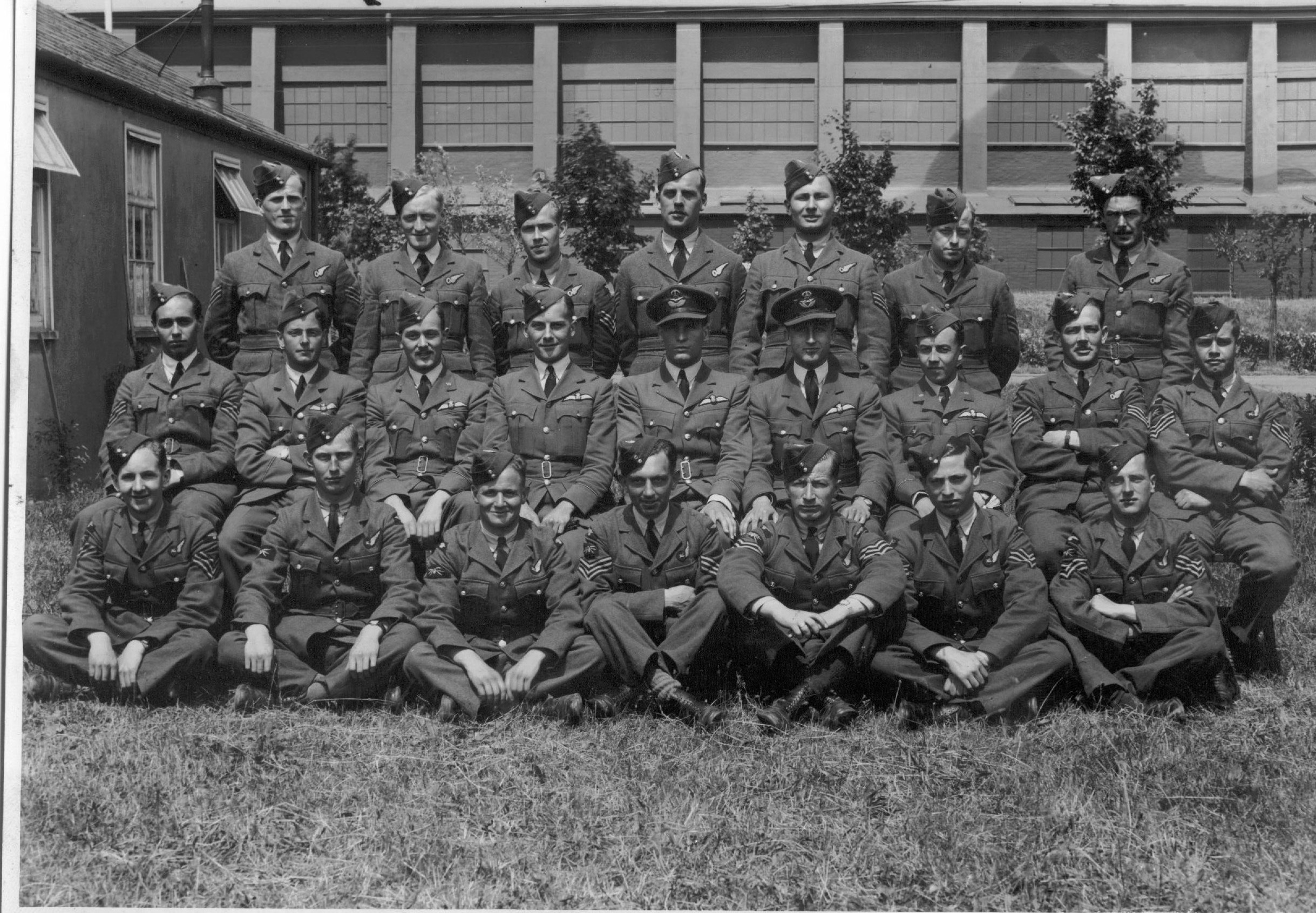 |
|
It is possible this shows a flight of No 53 Squadron in the early part of WW2 Photo courtesy Jane Newton |
[Aircraft & Markings | Personnel, aircraft and locations | Commanding Officers]
No 53 Squadron Association: - email 53sqn@oxoiantravel.co.uk
 Formed on 16 May 1916 at Castle Bromwich as a fighter unit, it was initially
equipped with Be2s and Avro 504s but in September Sopwith Pups arrived and these
were taken to the Western Front in December of that year. Camels arrived
in December 1917 and remained the squadron's equipment until the end of
the war. Reduced to cadre in January 1919, it transferred its aircraft to
No 151 Squadron and returned to Yatesbury, where it disbanded on 25 October 1919.
Formed on 16 May 1916 at Castle Bromwich as a fighter unit, it was initially
equipped with Be2s and Avro 504s but in September Sopwith Pups arrived and these
were taken to the Western Front in December of that year. Camels arrived
in December 1917 and remained the squadron's equipment until the end of
the war. Reduced to cadre in January 1919, it transferred its aircraft to
No 151 Squadron and returned to Yatesbury, where it disbanded on 25 October 1919.
The squadron reformed on 15 January 1930 at Hornchurch, once again in the fighter role. Until its operational equipment arrived in the form of Bulldogs, it used Siskin IIIDC, trainers. Except for a month at Upavon in 1931, the squadron remained at Hornchurch until May 1940. Gauntlets replaced the Bulldogs in September 1936 and Gladiators replaced those in April 1937 and Spitfires arrived in March 1939.
The squadron flew defensive patrols until June 1940, when it began operations covering the Dunkirk evacuation. It then operated throughout the Battle of Britain until moving to Catterick in September. Returning to Hornchurch in February 1941, the squadron continued offensive operations over France until November, when it moved to Castletown in Scotland. In June 1942 the squadron moved south to Wellingore, but not for operations, but to prepare for a move overseas.
The squadron was to be part of a fighter wing tasked with the defence of Northern Australia against Japanese attacks. However, it was January 1943, before the squadron was ready to begin operations and by July, the attacks had ceased but the wing was retained until September 1945, when its aircraft were disposed of and the following month, its personnel returned to Britain, the squadron disbanding on 31 October 1945.
The squadron reformed on 15 November 1946, when No 183 Squadron was renumbered at Chilbolton, equipped with Tempest IIs. In June 1946 the squadron moved to Odiham, where it began conversion to Vampires in July. The squadron spent thirteen years at Odiham, replacing its Vampires with Meteor F Mk 8s in April 1952 and in their turn these were replaced with Hunter F Mk 1s in March 1955. By the time the squadron moved to Stradishall in July 1959, it was equipped with Hunter F Mk 6s.
In 1960 the squadron transferred to the ground attack role, receiving Hunter FGA Mk 9s. Three years later it formed an ground attack wing, together with No 1 Squadron, within Transport Command, moving to its new base of West Raynham. It was originally planned to re-equip this wing with the Harrier, but this was rescinded and No 54 disbanded on 1 September 1969. On the same day, however, No 54 was reformed at Coningsby as a Phantom ground attack unit. However, Phantoms in this role where only seen as a stop-gap pending the introduction of the Jaguar and in March 1974, No 54 (Designate) Squadron began training at Lossiemouth. On 22 April the Phantom unit disbanded and the following day the number-plate was officially transferred to the Jaguar unit, which moved to its main base of Coltishall in August 1974, where it disbanded on 11 March 2005. However, it reformed as No 54 (Reserve) Squadron on 5 September 2005 at RAF Waddington as the C2ISTAR (Command and Control, Intelligence, Surveillance, Target Acquisition and Reconnaissance OCU. Since then it as been responsible for the training of crews for the Nimrod R Mk 1, Sentry AEW Mk 1, Sentinel R Mk 1, RC-135W Rivet Joint and Poseidon MRA Mk 1. On 1 February 2018, the 'Reserve' title was dropped.
| Standards | Battle Honours* |
| Award of Standard originally announced on 15 Oct 1953,
effective from 1 Apr 1953 but
presented:-
1st - 24 May 1963 Major K K Horn RFC. 2nd - 21 January 1988 ACM Sir Peter Harding. 3rd - xx May 2007 AVM A Pulford |
Western Front, 1916-1918: Arras: Ypres, 1917: Cambrai, 1917: Amiens: Home Defence, 1940-1945: France & Low Countries, 1940: Dunkirk: Battle of Britain, 1940: Fortress Europe, 1941: Eastern Waters, 1943-1945: Gulf, 1991: |
Squadron Codes used: -
| DL | Apr 1939 - Sep 1939, Apr 1944 - Oct 1945 |
| KL | Sep 1939 - Jun 1942 |
| HF | Nov 1945 - Apr 1948 (Codes taken over from No 183 Sqn) |
| GA - GZ | Carried on Jaguars |
[Aircraft & Markings | Personnel, aircraft and locations | Commanding Officers]
 Formed
at Castle Bromwich on 27 April 1916, it was originally intended as a training
squadron, but in January 1917, it became the first unit to be equipped with the
DH4 day bomber. These were taken to France in March and it immediately
began bombing attacks and reconnaissance missions against airfields, lines of
communications and other targets behind the enemy lines. In June 1918, the
squadron joined the Independent Force and carried out similar operations even
further behind the lines, becoming part of one of the earliest strategic bombing
forces. Following the Armistice, the squadron carried mail until January
1919 when it returned to Renfrew as a cadre. Moving again in December
1919, this time to Shotwick, it disbanded on 22 January 1920.However, it reformed on 1 February 1920, when No 142 Squadron at Suez was
renumbered. Initially equipped with DH9s these began to be replaced by
DH9As in June, the process being complete by September. In July it had
moved to Turkey as part of 'Q' Force and on its return from there in September,
it re-located to Iraq, where it was to remain until 1939. The DH9As were
eventually replaced by Wapiti's in 1930 and in their turn by Vincents in 1937.
Modern equipment arrived in March 1939 when Blenheims replaced to Vincents but
in August the squadron moved back to Egypt.
Formed
at Castle Bromwich on 27 April 1916, it was originally intended as a training
squadron, but in January 1917, it became the first unit to be equipped with the
DH4 day bomber. These were taken to France in March and it immediately
began bombing attacks and reconnaissance missions against airfields, lines of
communications and other targets behind the enemy lines. In June 1918, the
squadron joined the Independent Force and carried out similar operations even
further behind the lines, becoming part of one of the earliest strategic bombing
forces. Following the Armistice, the squadron carried mail until January
1919 when it returned to Renfrew as a cadre. Moving again in December
1919, this time to Shotwick, it disbanded on 22 January 1920.However, it reformed on 1 February 1920, when No 142 Squadron at Suez was
renumbered. Initially equipped with DH9s these began to be replaced by
DH9As in June, the process being complete by September. In July it had
moved to Turkey as part of 'Q' Force and on its return from there in September,
it re-located to Iraq, where it was to remain until 1939. The DH9As were
eventually replaced by Wapiti's in 1930 and in their turn by Vincents in 1937.
Modern equipment arrived in March 1939 when Blenheims replaced to Vincents but
in August the squadron moved back to Egypt.
In June 1940, it began to carry out operations against Italian targets in Libya and remained in the Western Desert when the other day bomber units were sent to Greece in early 1941. In March 1942, the squadron was withdrawn to Egypt, where in May it converted to Baltimores. These were used operationally for the first time in July and from then the squadron was constantly occupied on operations against Axis targets throughout North Africa and later Sicily and Italy, to where the squadron moved in September 1943, until the end of the war.
The squadron moved to Greece in September 1945, where it converted to Mosquitoes in June 1946, but on 1 November 1946, the squadron was disbanded, however, the number was kept alive between 1 February 1949 and 14 July 1957 when it was linked to No 44 Squadron. I was fourteen years before the squadron reformed on 1 September 1960 at Honington. It was now part of the V-Force equipped with Victor bombers, but in 1965, following the withdrawal of the Valiant as a result of metal fatigue, No 55 was transferred to the air-to-air refuelling role, moving to Marham in May 1965. The squadron remained part of the strategic tanker force until disbanding on 15 October 1993, when the Victor was finally retired from service.
However, on the same day No 241 OCU at Brize Norton was redesignated No 55 (Reserve) Squadron, its task being the training of Tristar and VC10 crews, although it did not have any aircraft of its own, instead it utilised aircraft borrowed from the operational units. This task ended on 31 March 1996 when the squadron disbanded once again, but on 1 November of the same year the number was resurrected when the Navigation Squadron of No 3 FTS at Cranwell was redesignated No 55 (Reserve) Squadron, being responsible for the training of Weapons Systems Officers/Operators. The Strategic Defence and Security Review in 2010 saw the decision taken to end the training of WSOs due the gradual rundown of the Tornado fleet and as a result the Dominie was retired from service in January 2011 and No 55 Squadron disbanded.
Linked with No 44 Sqn, 1/2/49 - 14/7/57
| Standards | Battle Honours* |
| Award of Standard originally announced on 7 Sep 1943,
effective from 1 Apr 1943 but
presented:- 1st - 20 July 1962 HRH Princess Marina, Duchess of Kent. 2nd - 13 Oct 2006 AVM J M M Ponsonby |
Western Front,
1917-1918: Arras: Ypres,
1917: Independent Force & Germany, 1918: Egypt & Libya, 1940-1943:
El Alamein: El Hamma: North Africa, 1943: Sicily, 1943: Salerno:
Italy, 1943-1945: Gustav Line: Gothic Line:
Iraq, 1920: Kurdistan, 1922-1924: Iraq, 1928-1929: Kurdistan, 1930-1931: Northern Kurdistan, 1932: South Atlantic, 1982: Gulf, 1991: |
Squadron Codes used: -
| GM | Allocated Apr 1939 - Sep 1939 |
_small.jpg)
|
_small.jpg)
_small.jpg) |
_small.jpg)
_small.jpg) |
_small.jpg)
_small.jpg) |
||
| Photos of No 55
Squadron in the Western Desert from the collection of James "Jimmy" Moon
DFC, RAAF Courtesy John Moon (Jimmy's son) |
||
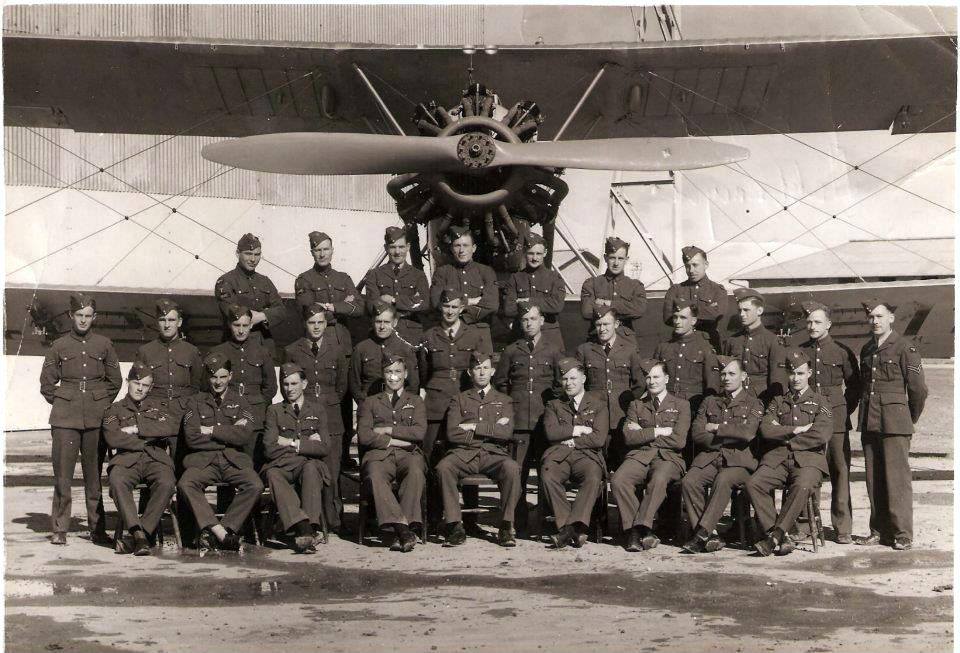 |
|
| 'C' Flight, No 55 Squadron - James Gascoyne 2nd from left, middle row | |
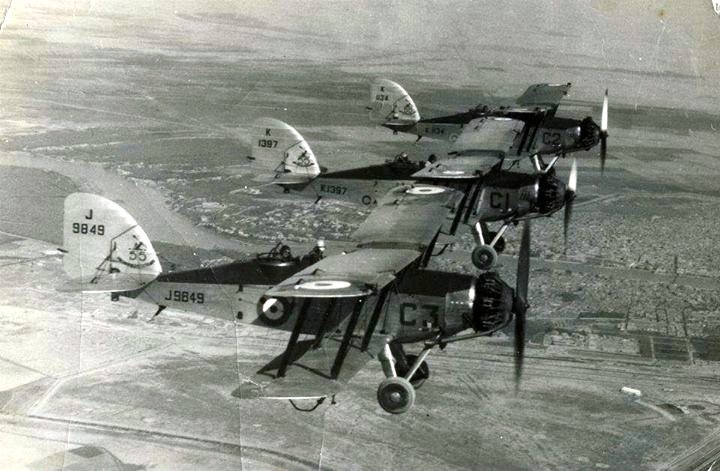 |
|
| Wapitis of No 55 Squadron | |
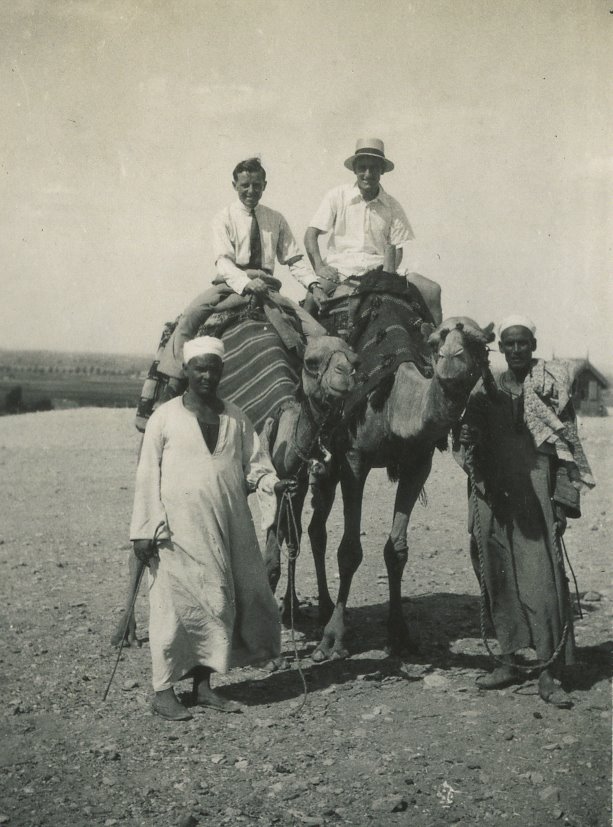 |
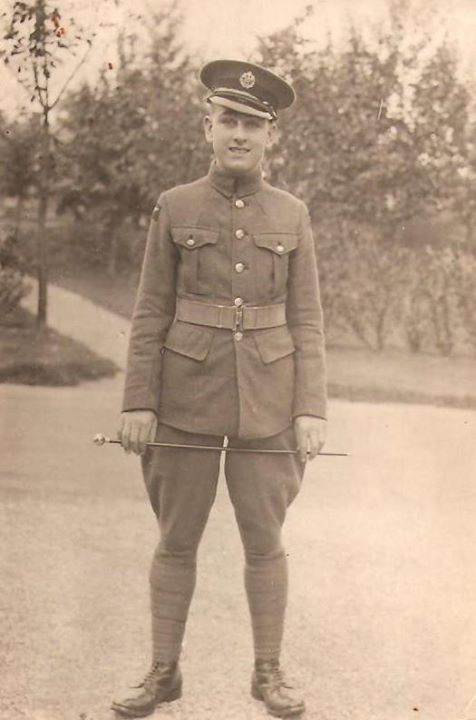 |
| Dad on the camel on the right in Egypt, with his friend Bert Kelly | James Gascoyne |
| Photos of No 55
Squadron from the collection of James Gascoyne (known as Hugh) Courtesy Lynda Clifton (Hugh's daughter) |
|
[Aircraft & Markings | Personnel, aircraft and locations | Commanding Officers]
*Honours in Black are those the squadron has a been granted the right to emblazon on the Squadron Standard, but does not do so.
Honours in Red are those actually emblazoned on the Squadron Standard
Honours in Blue are those the squadron has not been granted the right to emblazon on the Squadron Standard
Squadron badges on this page are courtesy of Dave Clifford
© Crown Copyright is reproduced with the permission of the Directorate of Intellectual Property Rights
This entry was last updated on 12/05/25©
![]() Organisational
Index
Organisational
Index ![]()